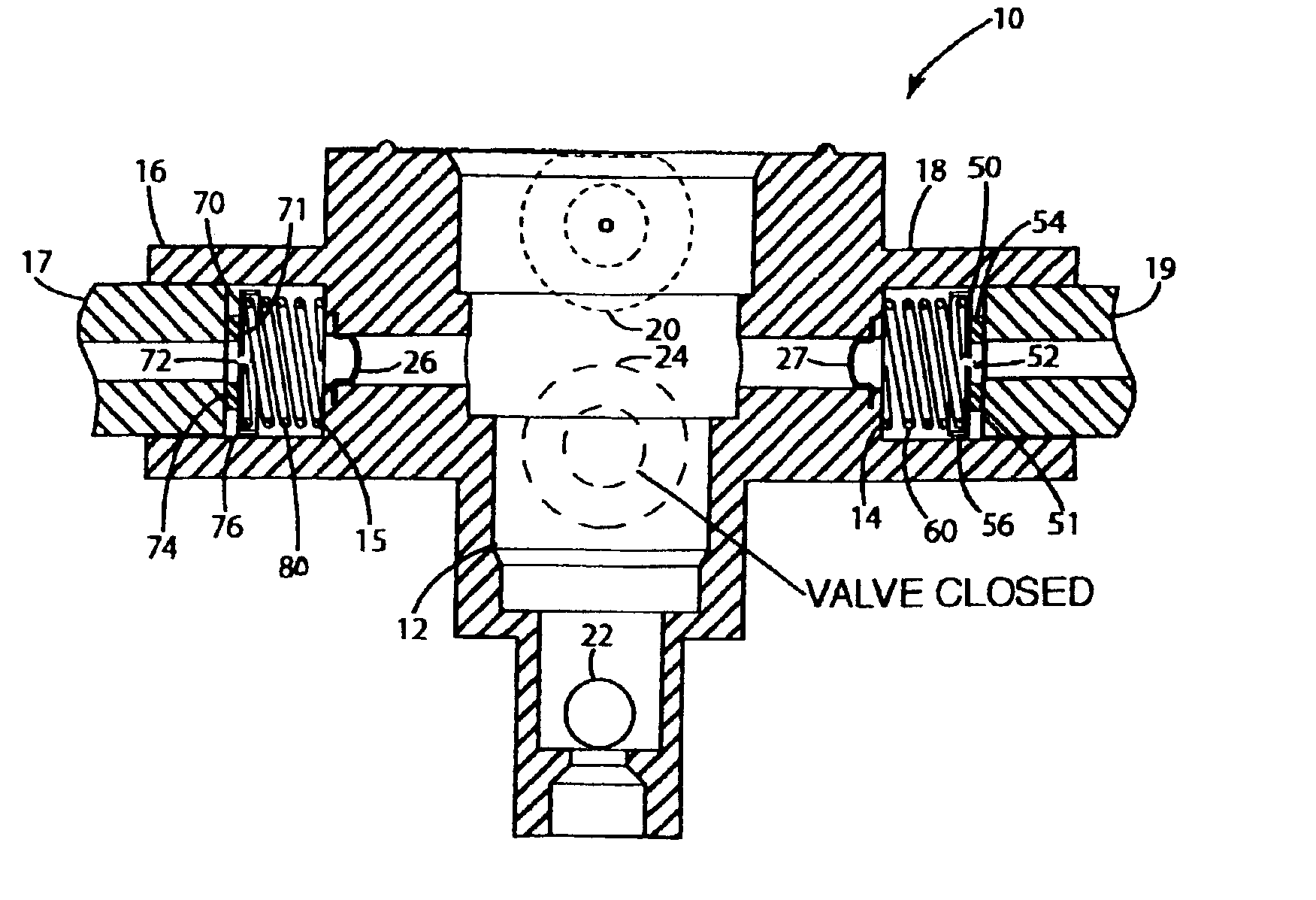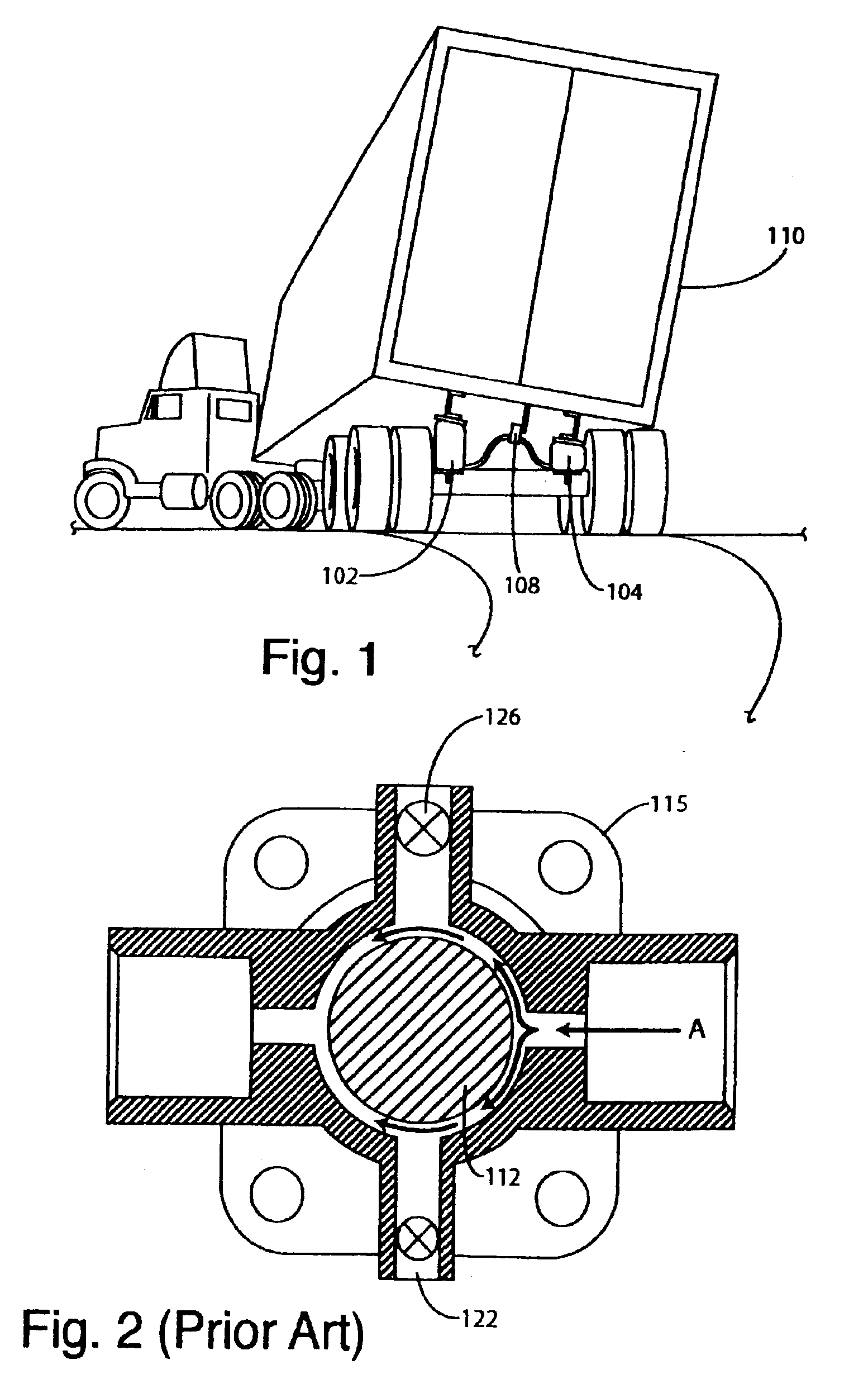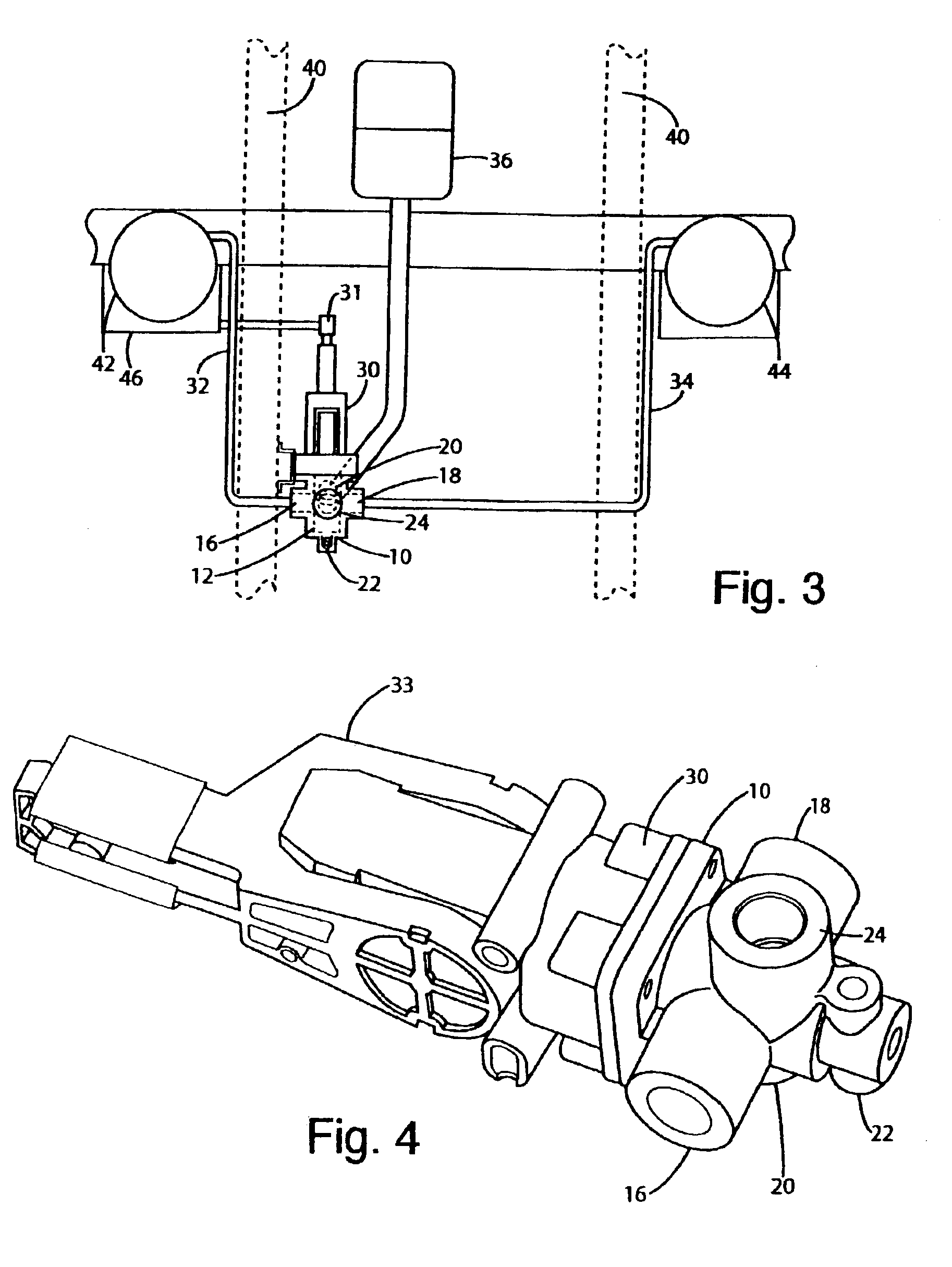Anti-roll suspension valve body
a technology of suspension valve and valve body, which is applied in the direction of shock absorbers, cleaning using liquids, transportation and packaging, etc., can solve the problems of obstructing the suspension port and allowing the vehicle to pass freely, and achieves the effect of reducing the ride height of the vehicle, easy installation, and quick dumping of air
- Summary
- Abstract
- Description
- Claims
- Application Information
AI Technical Summary
Benefits of technology
Problems solved by technology
Method used
Image
Examples
first embodiment
A valve body according to the present invention is illustrated in FIGS. 3, 4 and 7-10 and generally designated 10. For purposes of disclosure, the valve body 10 is described in connection with a conventional leveling system where the valve mechanism 30 couples to valve body 10 where the valve mechanism functions to control the flow of air into and out of the suspension elements 42, 44 through valve body 10 (see FIG. 3). The valve body is well suited for use in a variety of other leveling systems besides suspension, such as conventional truck cab leveling systems designed to level the truck cab with respect to the truck frame.
The leveling system of the present invention generally includes valve body 10 coupled to a valve mechanism 30 including an actuator yoke 33. The valve mechanism 30 is mounted to the vehicle frame 40 in a conventional manner and connected to the axle 46 or any other part suspension via actuator yoke 33. The actuator yoke 33 may be mounted to virtually any element...
fourth embodiment
In operation, the (1) prevents completely unrestricted side-to-side air transfer in suspension elements of a vehicle, for example, from element 242 to element 244 or vice versa; (2) fills the suspension elements at a rate somewhat less than the rate of the previously described embodiments to increase ride height; and (3) rapidly dumps air from the suspension elements to lower ride height. Under normal conditions, when the suspension elements and are under equal loads, the system is static.
During cornering, for example, taking a hard left turn, right suspension element 242 would be subjected to a tremendous force, and would try to compensate by expelling air therefrom. With reference to FIG. 15, if suspension element 242 expels air into suspension line 232, that air travels unrestricted through one-way valve 454. Thereafter, the air cannot go through one-way valve 455 and enter left side suspension line 234, because that valve is forced closed to prevent air flow therethrough. The a...
PUM
 Login to View More
Login to View More Abstract
Description
Claims
Application Information
 Login to View More
Login to View More - R&D
- Intellectual Property
- Life Sciences
- Materials
- Tech Scout
- Unparalleled Data Quality
- Higher Quality Content
- 60% Fewer Hallucinations
Browse by: Latest US Patents, China's latest patents, Technical Efficacy Thesaurus, Application Domain, Technology Topic, Popular Technical Reports.
© 2025 PatSnap. All rights reserved.Legal|Privacy policy|Modern Slavery Act Transparency Statement|Sitemap|About US| Contact US: help@patsnap.com



